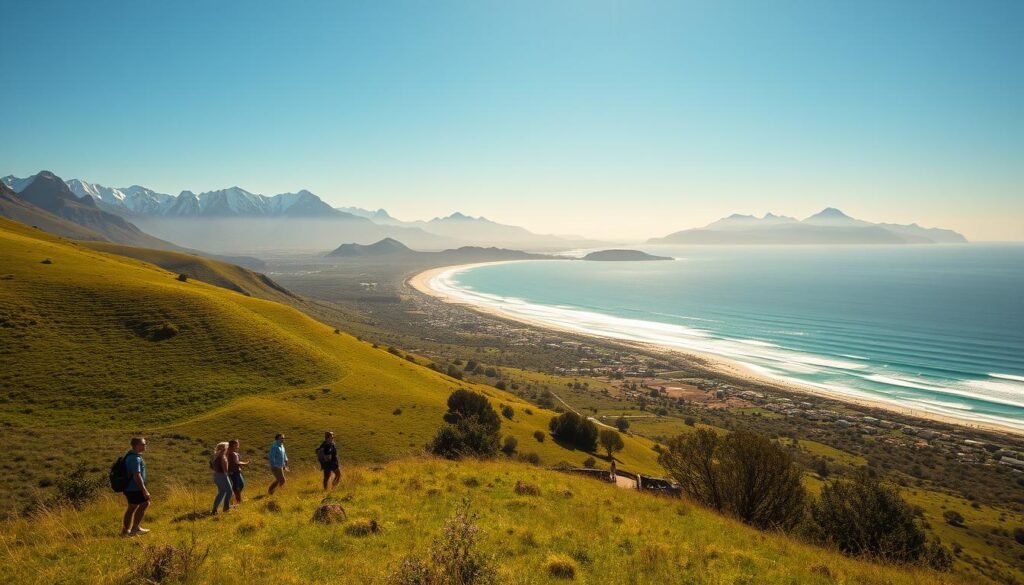Surprising fact: I learned that wildlife viewing peaks in the dry winter months, yet beaches often shine in summer — so nearly every month has a standout draw.
I plan my trips around what I want most: Cape Town and coastal regions offer warm, dry days in their summer, though sea breezes keep Cape Town cool and often windy. January through March gives classic beach days and green bush with newborn animals in parks like Kruger.
April and May cool and dry, crowds thin, and prices ease. June through September brings crisp safari conditions, low mosquito risk, whale watching near Hermanus, and August wildflower carpets up the West Coast.
October and November warm up for great coastline-and-wildlife combos, while December is a busy holiday month that I always book early. For a full month-by-month plan, I check regional guides like when to go to match my dates with weather and events.
Key Takeaways
- Choose coast or safari first — that decides your ideal months.
- Summer (Dec–Feb) = beach weather; Cape Town can be windy.
- Jan–Mar brings beaches and green parks with baby animals.
- Apr–May is a sweet shoulder season with fewer crowds.
- Jun–Sep is prime safari season and whale watching.
- Book December travel early for peak holiday demand.
South Africa’s Seasons at a Glance: Weather, Crowds, and Value
I treat season as a regional rule: Cape Town and the Western Cape enjoy dry, warm summer days while Kruger sees its dry winter that boosts safari visibility.
High season usually runs December–February. Shoulder months are March–May and September–November. Low season falls in June–August, which often brings quieter streets and lower rates in Cape Town.
Cape Town’s busiest stretch is December–January, and safaris crowd up in December and again in June–August. I aim for April–May or October–November when prices ease and crowds thin.
Expect coastal sun and cool Atlantic water in summer, while Johannesburg and the parks face afternoon rainstorms in the summer months. In winter, crisp mornings and lower temperatures help game drives — thinner vegetation funnels animals to water, improving sightings and cutting mosquitoes.
- Plan by region: coastal dry summers vs. inland dry winters.
- Value windows: April–May and October–November for fewer crowds and better rates.
- Expectations: different conditions across provinces mean I match activities to local weather.
The Best Time to Visit South Africa by Month: January to December
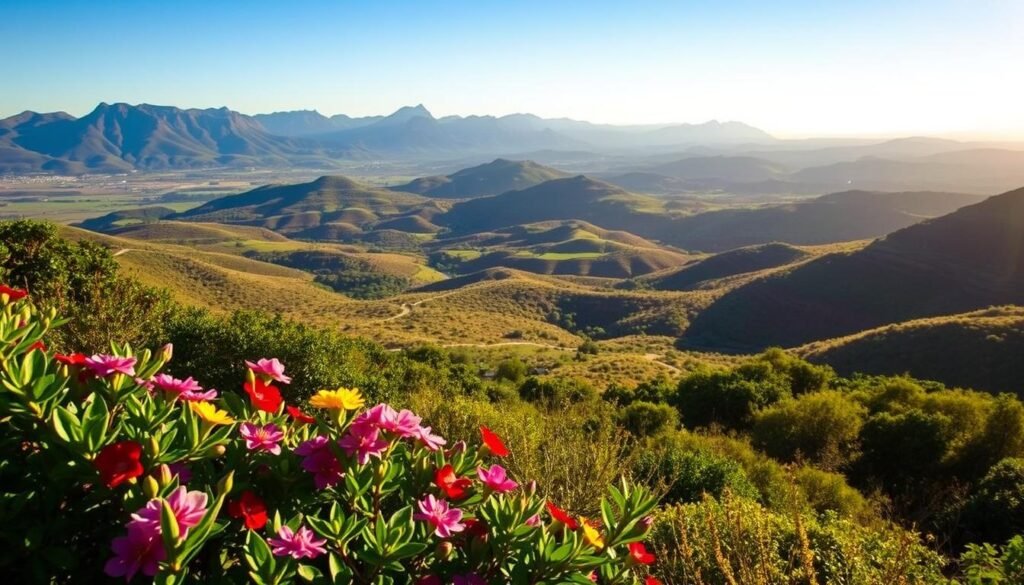
I break the year into months so I can plan beaches, safaris, and whale watching around real conditions. Below I summarize what each block of months feels like and why I pick certain regions for specific days and activities.
January–March
Summer brings warm days along the coast and lush, green bush inland. January is ideal for beaches; KwaZulu‑Natal can be hot and humid while Kruger shows newborn animals amid thicker foliage.
February is often the hottest month with coastal breezes easing Cape towns. In March vegetation thins and safari visibility improves.
April–June
April starts busy with Easter then quiets into a warm, dry stretch that suits multi‑region trips. May brings cooler, sunny days on the Indian Ocean coast.
June kicks off whale season near Hermanus and marks excellent dry‑season game viewing in Kruger.
July–September
July and August offer peak safari clarity, low mosquito risk, and superb whale watching. Wildflowers usually bloom in August along the West Coast.
September’s spring energy makes sightings at Shamwari, Phinda, and Kruger especially active.
October
Landscapes green up, temperatures rise, and coastal-and-safari combos are perfect before the holiday surge. Afternoon rains begin returning in the north.
November
Northern rains start; November is often the last month for Western Cape whale watching and a great window for Karoo and Free State drives.
December
December is a festive peak across popular regions. I always book lodges, restaurants, and tours well ahead for holidays and warm coastal days.
Where to Go When: Cape Town, Kruger National Park, Garden Route, and Beyond
![]()
I plan trips by activity first: pick sun or safari, then place each region on the calendar so days feel purposeful. This helps me balance coast and bush without wasting travel time between regions.
Cape Town & the Western Cape
I aim for November through March for long, dry days in cape town and the western cape. That stretch suits Table Mountain hikes, Winelands tastings, and Camps Bay sunsets.
Bring a wind layer for chilly Atlantic dips. I often pair city days with short drives for wildflower or coastal loops.
Kruger & Greater Kruger reserves
I reserve May through September for kruger national park and private concessions like Sabi Sand. Sparse vegetation and congregating game make morning drives especially rewarding.
Those months also cut mosquito risk and sharpen sightings across the parks.
KwaZulu‑Natal Coast
The Indian Ocean coast around Umhlanga and Ballito stays warm most of the year. I like May for quieter beaches and shoulder-season savings.
It’s easy to pair these shores with malaria‑free Eastern Cape reserves for a coast‑and‑safari combo.
Garden Route & Northern Cape
I plan the garden route for summer road trips from Mossel Bay to Plettenberg Bay. The Northern Cape adds big skies and August wildflowers if I loop north from Cape Town.
For efficient travel I check flight links and driving times so I spend days exploring, not commuting.
- Plan by activity: city, coast, or safari.
- Pair smartly: cape town summers with malaria‑free reserves, or kruger winters with warmer coasts.
When I choose dates this way, every day counts on a trip to visit south africa.
Safari Timing: Dry vs. Green Season, Wildlife Viewing, and Park Highlights
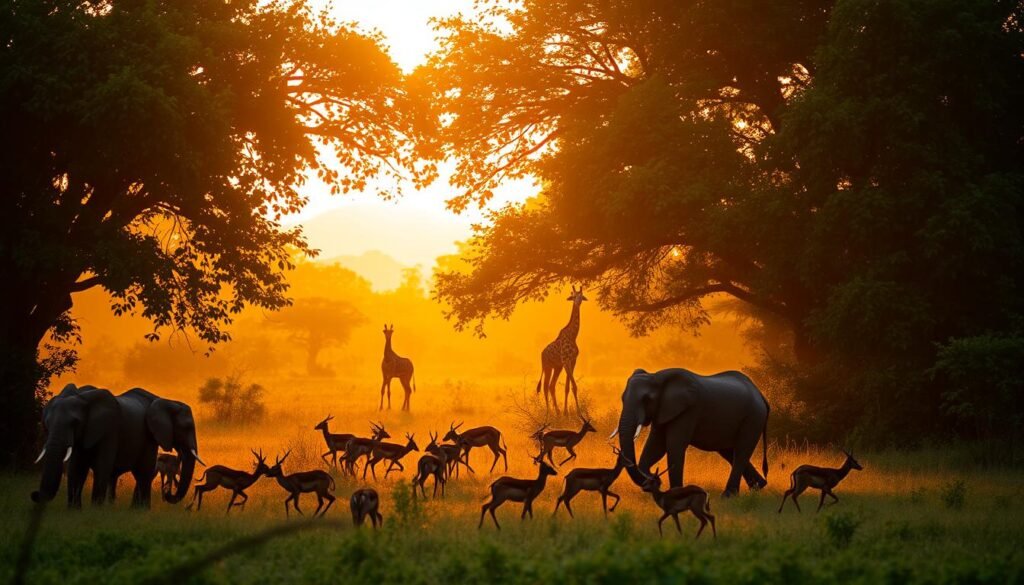
I weigh dry months that funnel animals toward water against green months that bring dramatic skies and newborns. My choice shapes each day of game drives and the type of sightings I expect.
Dry season (May–September) thins vegetation, concentrates wildlife at waterholes, and cuts mosquito numbers. I find safaris then deliver the clearest wildlife viewing and easier tracking.
Green season (October–April) offers lush landscapes, dramatic skies, and peak bird activity. I accept denser vegetation and quieter sightings for newborn mammals and spectacular colors.
Top parks by month
| Park / Reserve | May–Sep | Mar–Apr & Oct | Nov–Feb |
|---|---|---|---|
| Kruger National | Excellent | Good | Fair |
| Sabi Sand | Excellent | Good | Fair |
| Phinda | Excellent | Good | Fair |
| Hluhluwe‑iMfolozi | Excellent | Good | Fair |
“I pack a beanie, gloves, and a windproof layer for dawn drives — cold hands ruin a great sighting.”
- I pick dry-season safaris for focused wildlife viewing and easier game tracking.
- I choose green months for birding, calves, and vivid scenery.
- I compare parks and private reserves for off-road chances and night drives.
For regional planning and calendar checks I use a trusted regional guide. That helps me set expectations and pack right.
Beaches, Wine Country, Wildflowers, and Whales: How I Plan My Activities
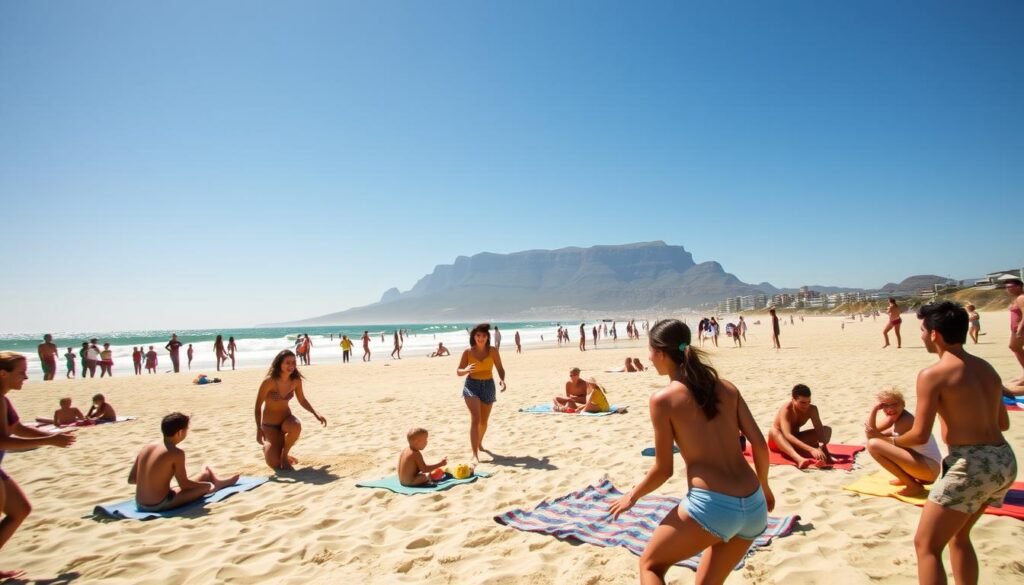
My calendar blocks months for coastal sun, vineyard harvests, whale runs, and wildflower hunts. I pick each day by matching the activity with local weather and event energy so every hour feels earned.
Beaches
I schedule most beach days in summer when sunshine is reliable. In cape town the Atlantic stays chilly and wind can blow, so I aim for sheltered coves and pack windbreaks.
Tip: bring a wetsuit for longer swims; plan afternoon tastings or hikes when surf is smaller.
Winelands & harvest
January through March is harvest energy in Stellenbosch, Franschhoek, and Paarl. I build vineyard days with market stops and outdoor concerts.
Wildflowers & whales
I road‑trip the West Coast in August for wildflowers and head to Hermanus from June–November for easy whale watching. Cliffside walks often beat boat rides for sightings.
- I pair early hikes, mid‑day tastings, and sunset beach time for balanced activities.
- I add kelp forest dives when conditions allow and pack layers since cape town weather can flip fast.
Best Time to Visit South Africa for Fewer Crowds and Better Prices
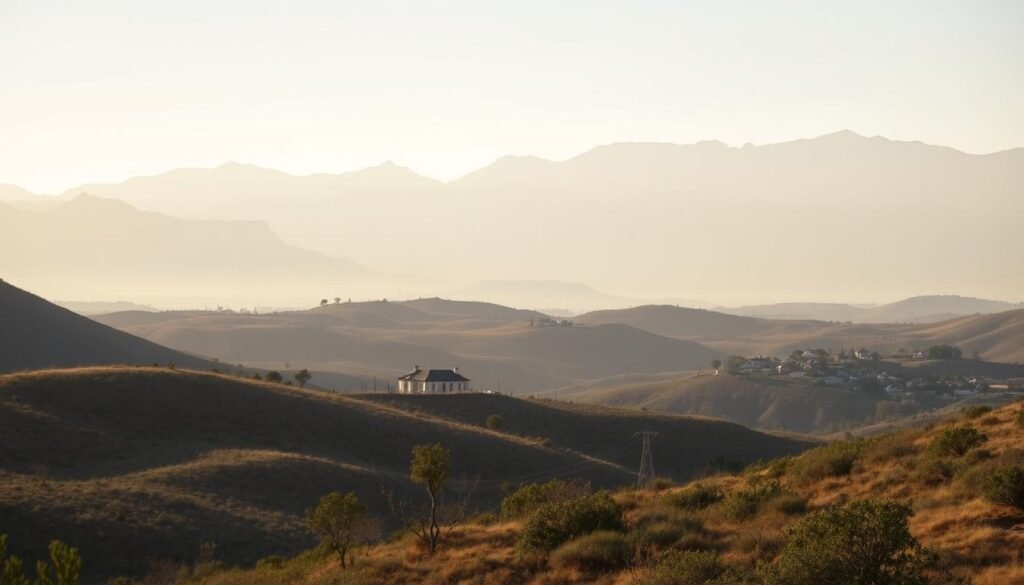
If you aim for quieter streets and friendlier prices, plan around shoulder months rather than the holiday crush.
High, shoulder, and low seasons: What to expect for rates and availability
I track three simple blocks: high season runs December–February and brings peak demand. Shoulder windows are March–May and September–November. Low season falls in June–August and often lowers Cape Town rates.
My value windows: March–May and September–November for balance and breathing room
I prefer April–May or September–November for warm days and fewer crowds. Cape Town prices dip May–August, but April–May often gives the best overall itinerary pricing.
- I skip the December–January crush when I want peaceful waterfront days and easy reservations.
- I book safaris outside heavy windows (December; June–August) for more intimate drives and fewer vehicles at sightings.
- I lock flexible, refundable tours during shoulder months and reserve restaurants early.
- I add a rest day between major moves so my trip feels relaxed and I value each day.
| Period | Demand | Price Trend | Best Use |
|---|---|---|---|
| Dec–Feb | Peak | High | Holiday vibe, book early |
| Mar–May | Shoulder | Moderate | Value + good weather |
| Jun–Aug | Low/Peak* | Lower in Cape Town; higher for safaris | Quiet city rates; safari demand up |
| Sep–Nov | Shoulder | Moderate | Balance of price and weather |
“I watch airline sales into Johannesburg and Cape Town around shoulder seasons, then build my routing to cut internal flight costs.”
I use these windows when I plan to visit south africa and when I visit south regions for coast or bush. Choosing the right season makes bookings easier and days more enjoyable.
Weather by Region: What I Pack and Expect Through the Year
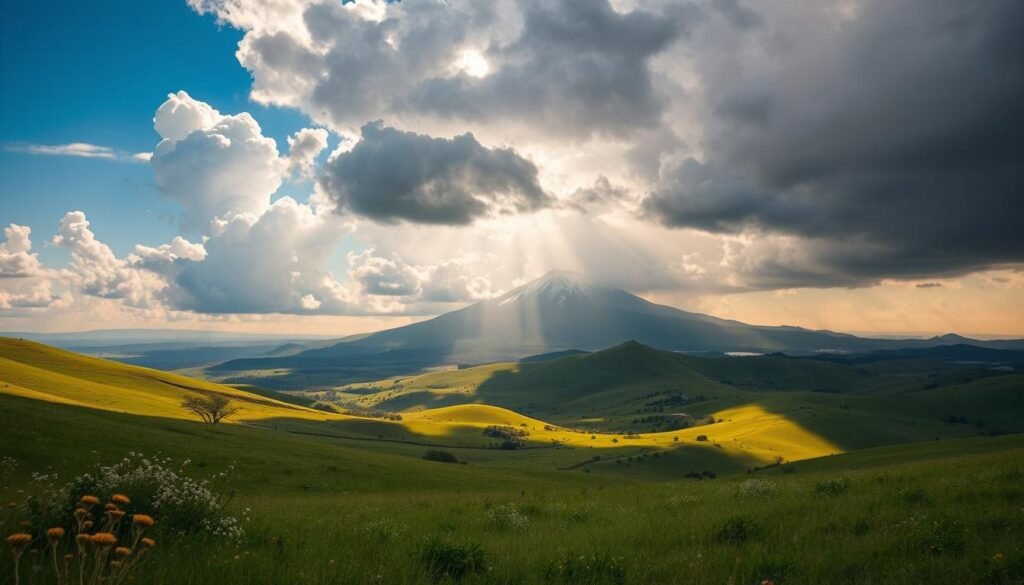
Packing for varied climate zones is my first step; weather can flip from sun to fog in hours. I plan for sets of conditions rather than a single forecast.
Western Cape
I expect dry, warm days from October through April, but gusty spells are common in cape town. The Atlantic stays cold year‑round, so I bring layers, a light windbreaker, and a warm top for evening or Table Mountain gusts.
Johannesburg & safari regions
Summer brings rain and warm temperatures, while winter yields clear days and chilly dawns on open vehicles. I pack a compact rain shell for wet runs and warm layers for early game drives.
- I keep gloves, a beanie, and a scarf for cold mornings.
- Closed shoes, neutral colors, sunhat with strap, and sunscreen for drives.
- A small daypack makes four‑season swings in one day manageable.
- Spare camera batteries and lens cloths for coastal mist and sudden showers.
“Windchill before sunrise is real — warm layers make early drives enjoyable.”
For regional planning I check a reliable regional climate guide so packing matches local conditions.
Conclusion
I close by matching each region’s rhythm with the activities I crave, so every day feels earned.
Choose seasons by your goals: May–September gives crisp safari viewing in Kruger National Park and Greater Kruger. November–March favors Cape Town and the Western Cape for sunny days and Winelands harvest energy.
Weave signature months into the plan: whale watching June–November, West Coast wildflowers in August, and Garden Route drives in summer. Aim for shoulder windows for budget gains, book peak holiday lodges early, and pack layers for sudden weather swings.
I’m ready to visit south africa with a clear map—pair regions smartly, keep space for surprise stops, and let the season shape the kind of wildlife and days you’ll remember.


